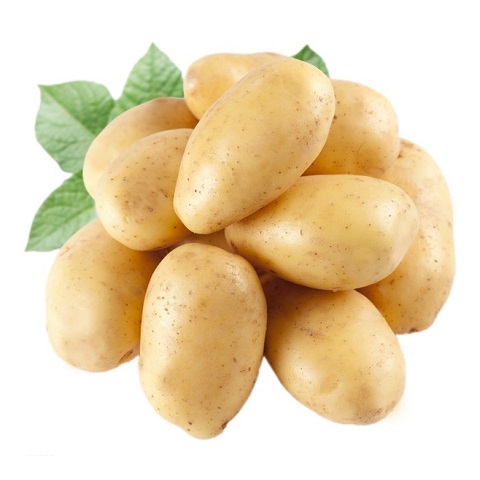| Disease / pest | Damage stage | Management / Chemical | Organic |
|---|---|---|---|
  |
Marks Of Identification:
Host Plants:
|
Management: In Field:
In Storage:
|
|
बटाटा
Category: Vegetables
- Farmer Knowledge
- Nutrients
- Pests
- test
- Documents
Farmer Knowledge
| Life Cycle Of Pest: |  |
 |
 |
 |
|---|---|---|---|---|
| Description: | Stage 1: Egg | Stage 2: Larvae | Stage 3: Pupae | Stage 4: Adult |
| Mark Of Identification: | Caterpillars : Small, pink yellowish with brown head. | Moth : Small, narrow winged & grayish brown, 15 mm wings span. It is nocturnal in habit. | ||
|
Life Cycle: |
Management (Pest Control):
| Chemical: | In Field: Spray with 0.05% quinalphos or 0.1% carbaryl at 60 days after planting.
In Storage : Fumigate the tubers with CS2 @ 1 kg/27 cu.m. for 48 hrs at 70″F. or methyl bromide @ 1 kg/27 cu.m. for 3 hrs before storage. CS2 is reported to induce sprouting in storage. |
|---|---|
| Organic: | Spray G Agro Beauveria 5gm/lit + G Agro Metarohizium 5ml/lit 2 to 3 spray at 21 days interval. |
Nutrients
|
Crop Stage Images |
||||||
|---|---|---|---|---|---|---|
| Crop Stage | Germination | Transplanting to plant establish stage | Flower Initiation to 1st picking | Vegetative Stage | Harvesting | |
| Duration (in days) |
10 | 30 | 30 | 80 | ||
|
Nutrients (Kg/ha) |
N | 20 | 60 | 80 | 40 | |
| P | 7.50 | 7.50 | 15 | 7.50 | ||
| K | 10 | 30 | 40 | 20 | ||
Pests
Tuber MothCutwormThripsRoot Knot NematodePotato Cyst Nematode
| Life Cycle Of Pest: |  |
 |
 |
 |
|---|---|---|---|---|
| Description: | Stage 1: Egg | Stage 2: Larvae | Stage 3: Pupae | Stage 4: Adult |
| Mark Of Identification: | Caterpillars : Small, pink yellowish with brown head. | Moth : Small, narrow winged & grayish brown, 15 mm wings span. It is nocturnal in habit. | ||
|
Life Cycle: |
Management (Pest Control):
| Chemical: | In Field: Spray with 0.05% quinalphos or 0.1% carbaryl at 60 days after planting.
In Storage : Fumigate the tubers with CS2 @ 1 kg/27 cu.m. for 48 hrs at 70″F. or methyl bromide @ 1 kg/27 cu.m. for 3 hrs before storage. CS2 is reported to induce sprouting in storage. |
|---|---|
| Organic: | Spray G Agro Beauveria 5gm/lit + G Agro Metarohizium 5ml/lit 2 to 3 spray at 21 days interval. |
| Life Cycle Of Pest: |  |
 |
 |
 |
|---|---|---|---|---|
| Description: | Stage 1: Egg | Stage 2: Caterpillar | Stage 3: Pupae | Stage 4: Adult |
| Mark Of Identification: | Caterpillar : 4-5 cm long, dirty black in colour and have habit of coiling at slightest touch. | Moth : Medium sized stout with greyish brown wavy lines & spots on fore wings. The moths are active at dusk and are attracted by light. | ||
|
Life Cycle: |
Management (Pest Control):
| Chemical: | 1% carbaryl poison bait @ 25-60 kg/ha controls the pest effectively. (1kg carbaryl 50WP +10Kg wheat bran + 1kg jaggery & sufficient water). Apply lindane dust @ 125 kg/ha, before planting of potato crop. |
|---|---|
| Organic: | Spray G Agro Beauveria 5gm/lit + G Agro Metarohizium 5ml/lit 2 to 3 spray at 21 days interval. |
| Life Cycle Of Pest: |  |
 |
 |
 |
|---|---|---|---|---|
| Description: | Stage 1: Egg | Stage 2: Larvae | Stage 3: Pupae | Stage 4: Adult |
| Mark Of Identification: | ||||
|
Life Cycle: |
Management (Pest Control):
| Chemical: | Spraying the crop with 0.02 % phosphamidon or 0.025 % methyl demeton or 0.03 % dimethoate at 10 days interval as per needed. |
|---|---|
| Organic: | Spray G Agro Lecanicillium 5gm/lit + G Agro Metarohizium 5ml/lit 2 to 3 spray at 21 days interval. |
| Life Cycle Of Pest: | ||||
|---|---|---|---|---|
| Description: | Stage 1: Egg | Stage 2: Larvae | Stage 3: Pupae | Stage 4: Adult |
| Mark Of Identification: | ||||
|
Life Cycle: |
Management (Pest Control):
| Chemical: | Application of carbofuran 3G @ 1kga.i./ha. |
|---|---|
| Organic: | Spray G Agro Paecilomyces 5ml/lit 2 to 3 spray at 21 days interval. |
| Life Cycle Of Pest: | ||||
|---|---|---|---|---|
| Description: | Stage 1: Egg | Stage 2: Larvae | Stage 3: Pupae | Stage 4: Adult |
| Mark Of Identification: | ||||
|
Life Cycle: |
Management (Pest Control):
| Chemical: | Use of non fumigant carbofuran 3G @1-2 kg a.i/ha. |
|---|---|
| Organic: | Spray G Agro Paecilomyces 5ml/lit 2 to 3 spray at 21 days interval. |
test
Diseases/Pest on Potato :
- Tuber Moth
- Cutworm
- Thrips
- Root Knot Nematode
- Potato Cyst Nematode
Get the detailed information here:
| Disease / pest | Damage stage | Management / Chemical | Organic |
|---|---|---|---|
   |
Marks Of Identification:
Host Plant:
Nature Of Damage:
|
Management:
|
|
| Disease / pest | Damage stage | Management / Chemical | Organic |
|---|---|---|---|
  |
Nature Of Damage:
|
Management:
|
|
| Disease / pest | Damage stage | Management / Chemical | Organic |
|---|---|---|---|
  |
Hosts:
|
Management :
|
|
| Disease / pest | Damage stage | Management / Chemical | Organic |
|---|---|---|---|
   |
Symptoms:
|
Management:
|
|
Documents

